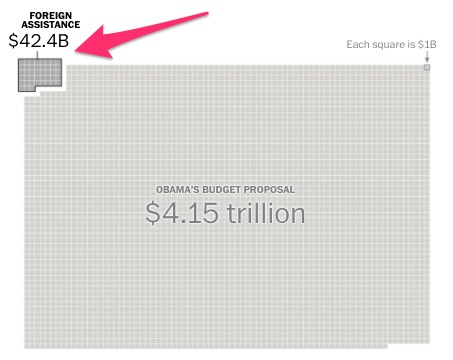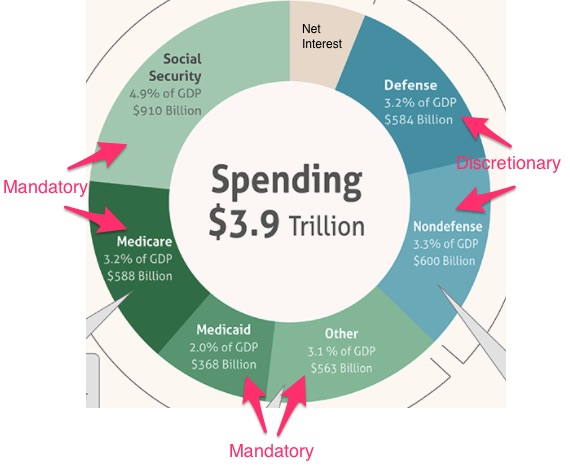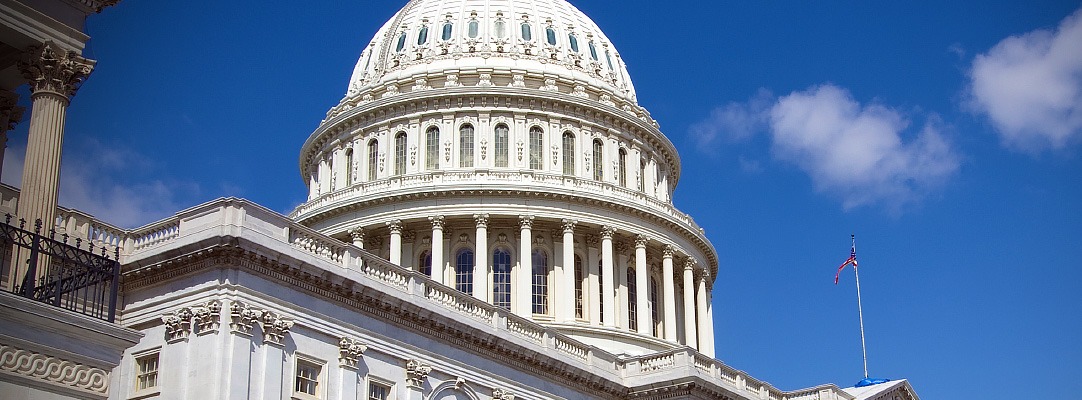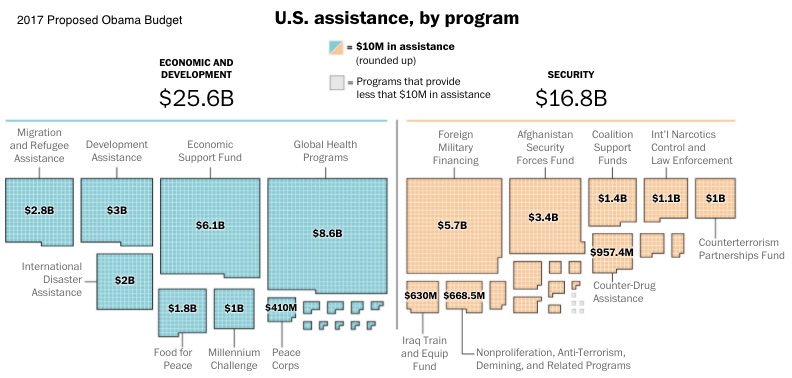Talking about foreign aid and the defense budget is like comparing a blueberry to a watermelon. Foreign aid spending is tiny while defense dollars are massive.

With federal spending on foreign aid, defense, Medicare and Medicaid in the headlines, let’s take a closer look.
Federal Spending
Foreign Aid
Asked whether we spend too much on foreign aid, 56% of those who were asked said yes in a 2014 Kaiser Study. However, when told that foreign aid was one percent of federal spending, 46% switched to “the right amount” or “too little.”
You can see that 95% of the survey answers were uninformed:
Ranging from embassy protection and foreign military support to global health programs and the Peace Corps, foreign aid spending covers a vast array of categories. Below is a Washington Post summary:
All Spending
The slices of the federal spending pie are either mandatory or discretionary. The discretionary slices refer to the expenditures that Congress has to approve each year. The mandatory categories though are the law. Until the Congress changes its mind, they continue automatically.
Too small to see, the foreign assistance slice of discretionary spending is dwarfed by Medicare, Medicaid, Social Security and Defense:

Our Bottom Line: Budgetary Additions and Cuts
When our politicians tell us that they will add to items like defense while maintaining all mandatory spending, the numbers don’t add up. The problem? All we have left to cut is nondefense discretionary spending. If we compare nondefense spending to all other federal expenditures, we can return to where we began–to a blueberry and a watermelon.
To add to the watermelon, there is little we can cut from a tiny fruit.
My sources and more: The Washington Post gave us a summary of foreign assistance spending that ideally complemented the Kaiser Family Foundation study from a previous year. Then, for the perfect overview of the federal budget, the CBO (Congressional Budget Office) has some wonderful infographics.









